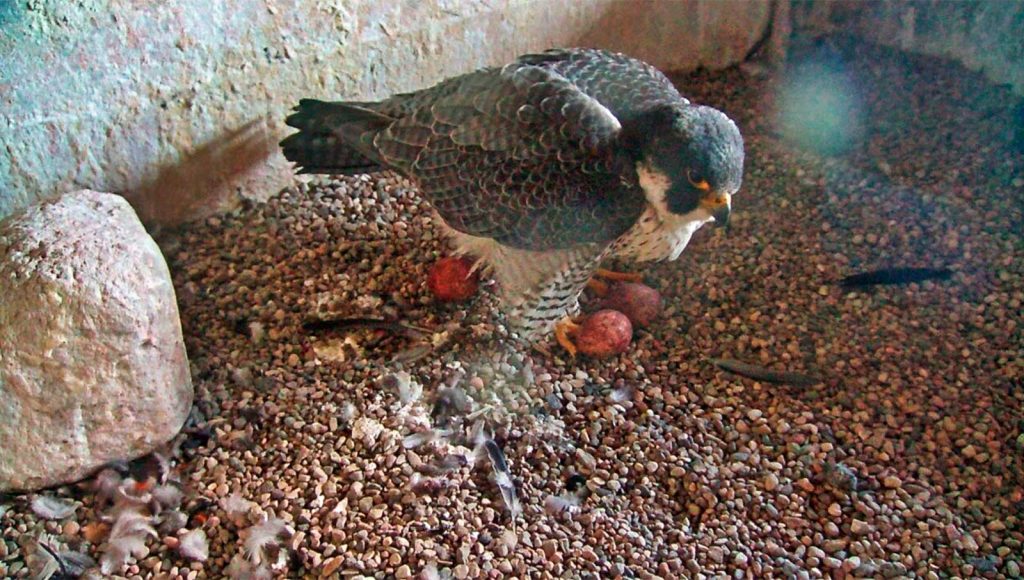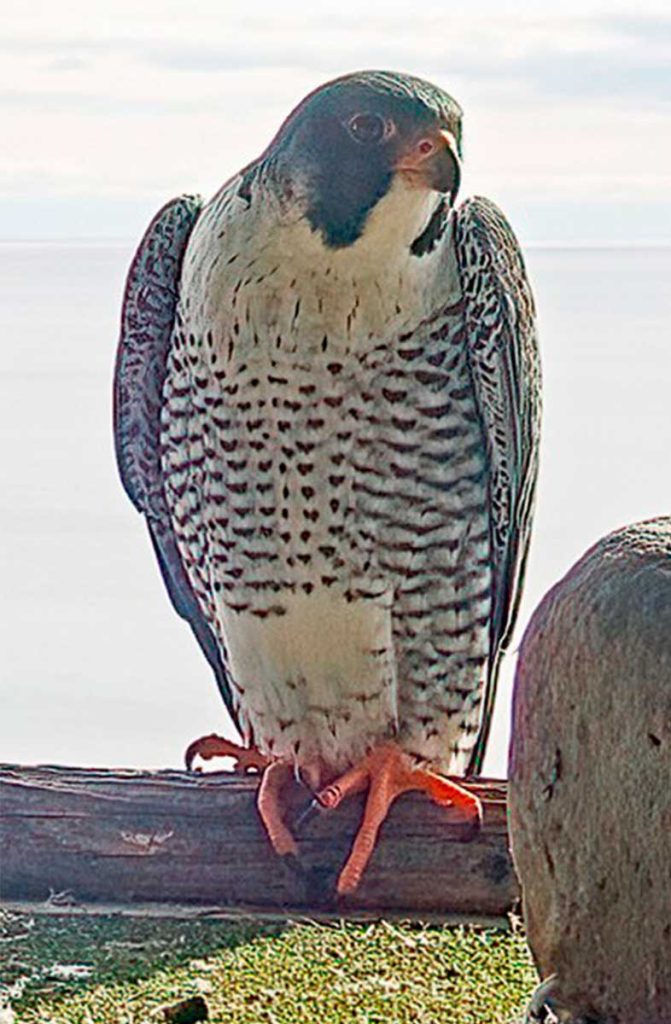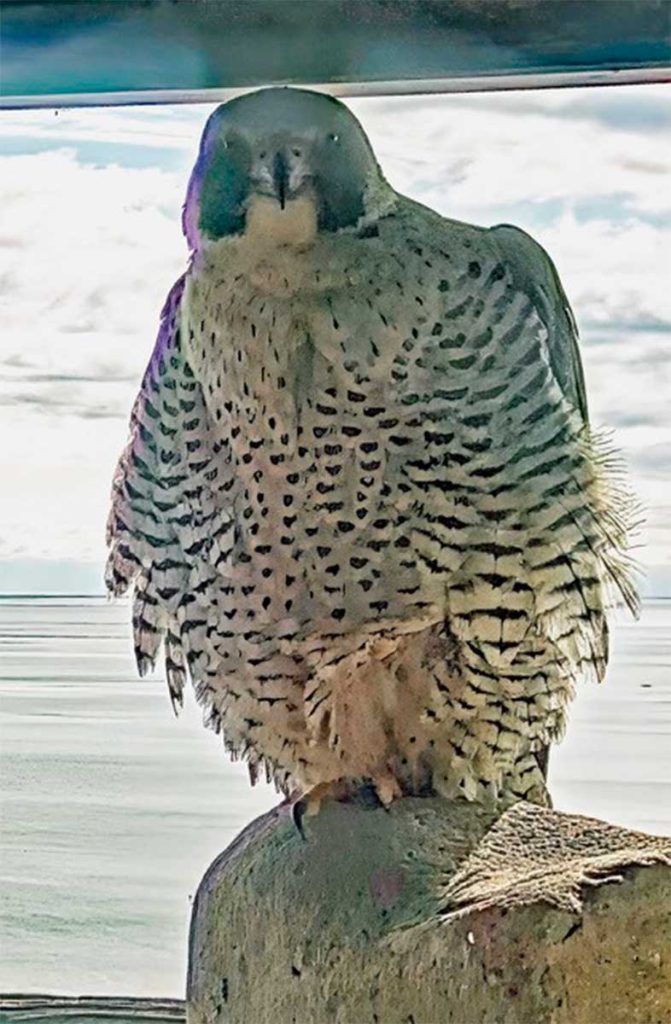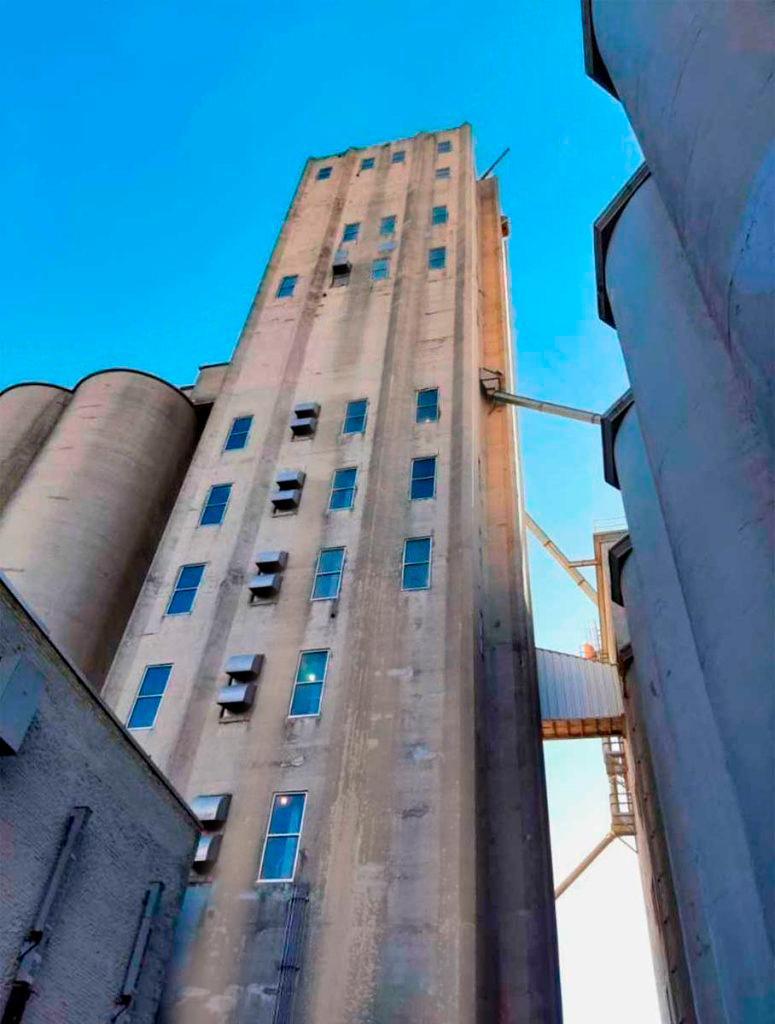
As winter turns to spring, there are some welcome signs that we all notice – the start of Major League Baseball season, seeing Garden Centers pop up at our favorite stores, and the return of falcons to their nesting sites!
Every year since 1998, pairs of falcons have arrived at the nesting box on the 11th Floor of the grain elevator at our malt plant in Manitowoc, Wisconsin, and produced baby falcons, which are called eyasses. This year’s arrivals were earlier than usual because of the mild winter in Wisconsin. The returning pair included the male Bartell, who returned for his eighth year, and an unbanded female, who returned for her fifth year. The female remains unbanded because if a falcon is not banded in the first several weeks of their life, it’s impossible to catch and band them later.


Mama falcon laid four eggs in the nesting box over a period of about ten days ending March 22. Four eggs are typical for a nesting pair. The eggs are scheduled to hatch between April 21-23, which is two weeks earlier than normal. As I write this blog, I’m watching mama falcon protect and warm the eggs in the nesting box on Briess’ Falconcam; you can check it out anytime at:
https://about.briess.com/sustainability-program/falcon-recovery-program
After the eyasses are born, Briess will have a naming contest on Facebook. Submit one name or all four. Winners will receive some awesome Briess swag!
Briess’ nesting box is part of Wisconsin’s Falcon Recovery Program. Since pairs of falcons started showing up at the nesting box in 1998, more than 80 eyasses have been produced there. There are 42 nesting boxes across the state, mostly located on tall buildings like power plants.

A couple of interesting facts about falcons:
- Falcons almost became extinct in the U.S. before DDT was banned in 1972. Since then, their population has steadily increased, and they were removed from the endangered species list in 1999.
- Falcons have been clocked at speeds up to 240 miles per hour while diving for prey. With speed like that, falcons catch almost all their prey in the air.
- Falcons have a vision that is 8 times stronger than humans. It allows them to spot small prey up to two miles away and then swoop down to catch it.
Briess is proud to play a role in helping maintain a healthy and growing falcon population.


